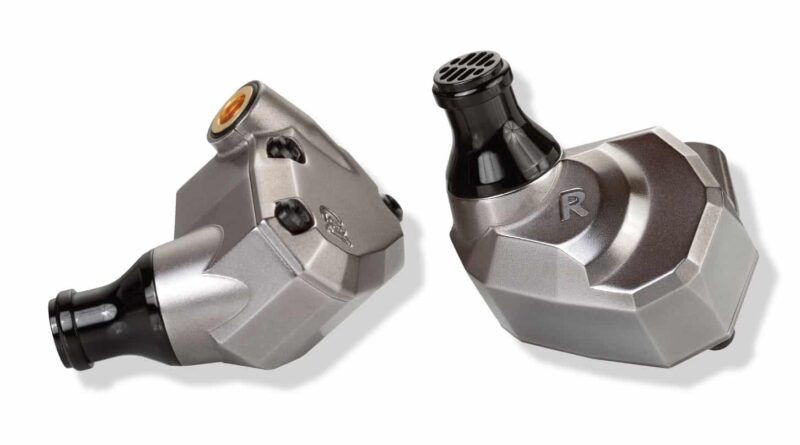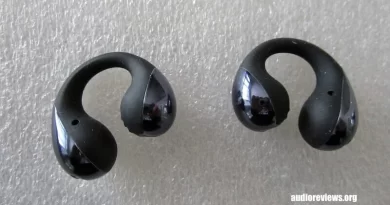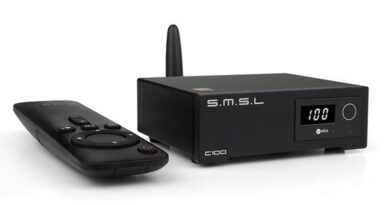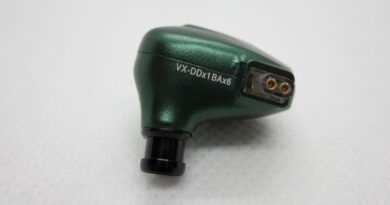Campfire Audio Ara Review – Everything In Its Place
Released in 2021, Campfire Ara can be seen in a sense as an evolution of the Andromeda project – or at least this is what their 8-BA architecture, and price tag ($1299) seem to hint. Here below my modest opinion.
In this Article
At-a-glance Card
| PROs | CONs |
| Beyond spectacular imaging and separation. | Inexpressive bass. |
| Gender lovers might adore the clear, almost crystalline timbre. | Unbodied center and low mids. |
| Good female vocals and high mids. | Marked BA timbre. |
| Good treble detail retrieval. | Difficult to pair due to challenging electrical specs |
Full Device Card
Test setup
Sources: Questyle QP1R / Questyle M15 / E1DA 9038D, 9038SG3 – Final B tips – Stock high purity OFC silver plated cable – lossless 16-24/44.1-192 FLAC tracks.
Signature analysis
Tonality
Ara’s timbre is clear and almost crystalline, however at times scanting into ethereal. Tonality is definitely bright, and the general impression is that of technical monitors striving to deliver as much uncolored transparency as possible.
Sub-Bass
Sub bass is extended and rumble is present, although lean and sometimes not authoritative enough
Mid Bass
Midbass is probably Ara’s worst part. Flat, only slightly elevated, and unforgivingly BA-fast, it is sharp, edgy, too snappy, not remotely punchy enough to be credible and most of all often hollow. Due to all this, of course texture is severely lacking.
I am not in audio tuning, you know, but situation makes me wonder what was the intended purpose for the adoption of even four (!) independent BA transducers for the low frequencies. It’s also worth noting that these BA drivers also lack in flexibility/latitude: they react quite poorly to EQing, giving back more/less loudness but hardly any real improvement in tone/musicality balancing.
Mids
Very quick and dry, somewhat lean in the lower part and get more bodied from the center up. Guitars are rendered well for the most part.
Male Vocals
Tenors and even more baritons suffer from Ara’s lack of body in the lower mids. That aside, they sound nice and detailed – they just lack true realism.
Female Vocals
Unlike male voices, female vocals on Ara are a point of excellence. Reasonably bodied, they take advantage of the driver in the right way this time and deliver a night-organic result, with enough room for texturing
Highs
Vivid and energetic, especially up above (brilliance). Ara’s trebles are very crisp and clean, full of air, never zingy – a real good job has been made here. This is of course where the BA drivers give their best in terms of snappy transients (especially attack). The limit gets hit upon raising the volume above comfort level, when some sound gets dangerously close to shoutyness.
Technicalities
Soundstage
Ara project a good stage, mostly in the horizontal and vertical direction, a bit less in the depth direction. The listener tends to perceive the room even grander due to all that air in the treble.
Imaging
Imaging is just stunning on Ara: instruments and voices are cast on the stage with razor sharp precision, there is never any fuzzyness, and most of all there is a lot of “clean air” amongst them. This, and layering, are no doubt the most outstanding features of the product.
Details
Detail retrieval is very very good from the trebles and the high mids, while just average from the bass due to those extrasnappy transients down there, cutting much of the texture and nuances from sounds below 3-400Hz.
Instrument separation
Separation and layering is close to as good as it can possibly get. Ara are capable of virtually telling all members of an orchestra or a chorus apart, however crowded might be the musical passage. Some exception might take place in the treble area, at very high listening volume levels – which I still tend to consider user’s misuse, not a device’s fault.
Driveability
Ara are tricky to properly bias as they carry very high sensitivity (94 dB SPL : 7.094 mVrms, corresponding to circa 118db/mW at their 8.5ohm impedance) which makes them hiss with quite a few different sources, and extremely low impedance, which requires extremely low output impedance pairings to avoid setting the bass tonality off. When paired to a powerful amp, an IFI IEMatch used on Ultra mode may help here.
Physicals
Build
Housings are literally built like tanks, made of titanium and assembled with evident attention to solidity. MMCX connectors exude quality.
Fit
Ara feature quite long nozzles, which is a piece of good news as their housings shape, size and edges might not totally easy to wear by “everyone”. They are also quite tip-dependant, although for once I must clap to the manufacturer for having included really pertinent tips with the product: both the bundled Final Type-E silicon tips and the Campfire foams do pair very well with the Ara. Being a nitpicker I find Final type B tips a tad even better than Type E, but that’s really a subtlety.
Comfort
As I mentioned above, Ara’s housings are not particularly small nor smooth so finding them comfortable is a hit or miss. To me it’s… a half hit. YMMV.
Isolation
After wearing them in a way to make them somewhat comfortable, Ara don’t offer much passive isolation to me
Cable
This part is a bit disappointing. Not much from the cable structure standpoint, as after rotating quite a few alternatives I don’t find the stock litz silver plated copper wire bad sounding at all, rather on the value side: at this point in the market evolution, a high budget product like Ara shuould, or I’d say “must”, be offered with a modular termination plug cable…
Specifications (declared)
| Housing | Machined titanium shells. “Tuned Acoustic Expansion Chamber™” internal structure |
| Driver(s) | 2 BA for high frequencies, 1 BA for mid frequencies, 4 BA for low frequencies |
| Connector | Custom Beryllium/Copper MMCX |
| Cable | Campfire Audio Litz Cable – Silver Plated Copper Conductors with Berylium Copper MMCX and 3.5mm Stereo Plug |
| Sensitivity | 94 dB SPL @ 1kHz: 7.094 mVrms = circa 118 dB/mW |
| Impedance | 8.5 Ω |
| Frequency Range | 10 – 28000 Hz |
| Package & Accessories | Campfire Audio Sustainable Cork Earphone Case – Final Audio Tips (xs/s/m/l/xl) – Campfire Audio Earphone Tips(s/m/l) – Silicon Earphone Tips (s/m/l) – Campfire Audio Lapel Pin – Cleaning Tool |
| MSRP at this post time | $1299,00 |
Comparisons
Campfire Andromeda 2020 (discontinued – was $1099)
Andromeda 2020 have a more neutral-balanced tonality, vs Ara’s distinctly bright-clear sided one. Andromeda have a more elevated bass and sub bass line, although note weight is not heavier by the same amount. Conversely, Ara’s high mids, and female vocals, are obviously more bodied, organic and pleasant then Andromeda’s.
Ara’s technicalities are clearly superior to Andromeda’s which, although very good, don’t really compete especially with Ara’s proweness about layering and imaging. Both drivers are tricky to correctly pair with sources due to their very low impedances and perniciously high sensitivies.
Both suffer from som excessively perceivable BA timbre. At the end of the day Andromeda 2020 is more musical, Ara more technical.
Fearless S8Z ($599)
Very simply put, S8Z can be seen as cheaper, less refined Aras. The two devices have in common a full-BA architecture (8 drivers for S8Z, 7 for Ara), a (too) prominent BA timbre, lack of body in the bass and lower mids, good trebles and both give their best on imaging and separation/layering. The differences are on “how well” the two carry out their jobs, Ara being – well… – better.
In particular, S8Z’s trebles are much less controlled compared to Ara’s and their imaging and layering capabilities, although often very good, are negatively impacted by excessive treble energy and occasional shoutyness.
Conclusions
Campfire Ara are no doubt remarkable IEMs, carrying a strong personality and some truly outstanding features – along with a quite significant price tag however.
The main reason to love Ara is their absolutely theatral capability to put every sound and every voice, however feeble or hidden, in its correct spot on the scene, keeping it separated and intelligible from the others and the ensemble. At the same time some (me included) may criticise their excessively light tone, ethereal at times, resulting in a somewhat aseptic presentation.
Even net of its shortcomings, Ara are anyhow a remarkable piece of audio engineering. Listening to Beethoven’s 9th on Ara is definitely an experience. I recommend anyone liking acoustic music to find a way to at least audition them, at least once…
I am thankful to Campfire for the review opportunity. Ara can be purchased from multiple distributors worldwide, or from Campfire direct shop, here.
Our generic standard disclaimer.







